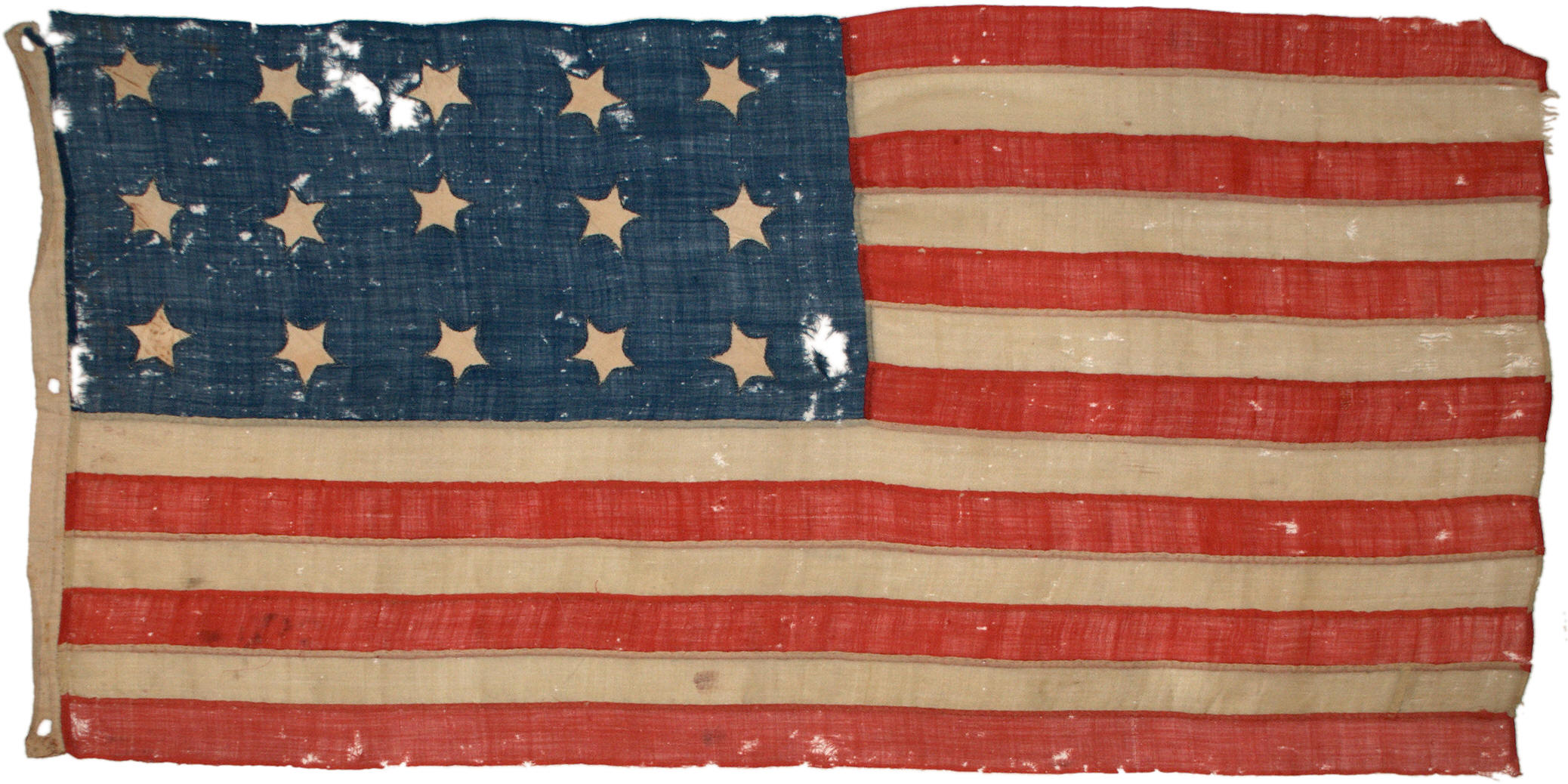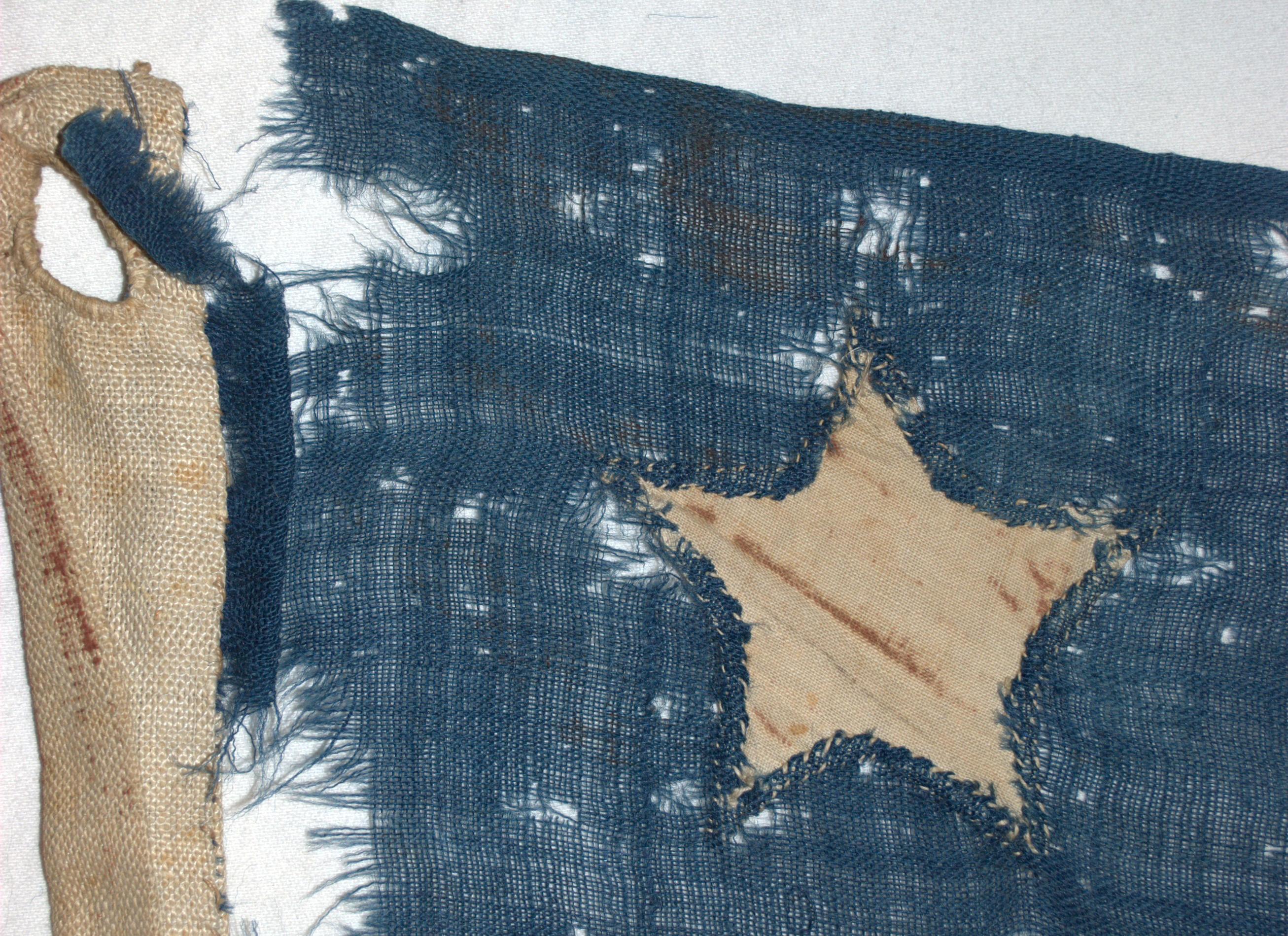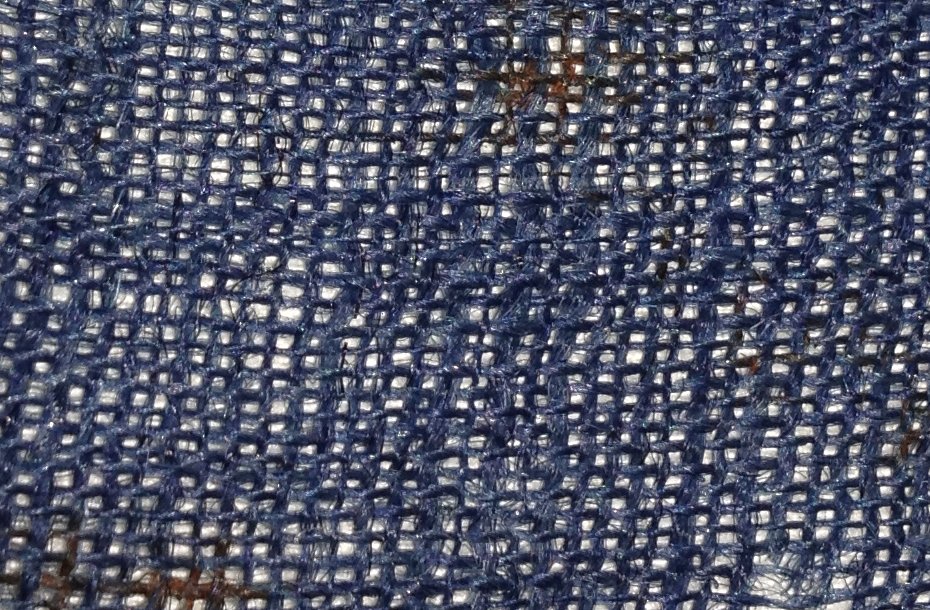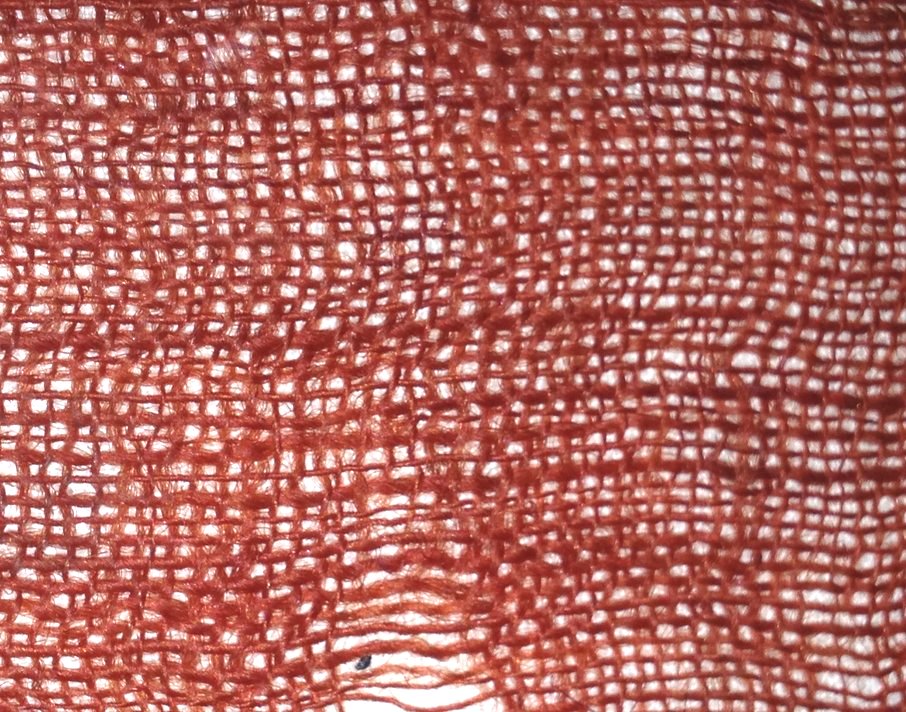|

Original period
flags from the earliest era in American flag-making,
prior to 1830 or so, are extraordinarily
rare. In fact, many scholars who have studied and
handled American flags believe that no American flags in
the stars and stripes format that date to the period of the
First Flag Act of 1777 during the American Revolution
still survive.
The earliest 13 star flags known (and of these there are
perhaps two or three authentic examples) likely date to
the Federalist Era, which begins in the years of the
Constitution, signed in 1787, and George Washington's
election as president in 1789, and ends in 1801 with
Thomas Jefferson's election. In 1794, Congress
passed the Second Flag Act, signed by President George
Washington, that updated the flag to fifteen stars and
fifteen stripes. Fifteen remained official until
the Third Flag Act of 1818, despite the fact that we
added Tennessee (16) in 1796, Ohio (17) in 1803,
Louisiana (18) in 1812, and Indiana (19) in 1816.
This flag could date
from as early as Kentucky statehood on June 1, 1792, to
as late as 1818. Its construction and materials closely
match those found in two other flags from this era:
The Star Spangled Banner Flag from the War of 1812,
sewn by Mary Pickersgill in Baltimore in 1813 now in the
Smithsonian Institution; and a rare
15 star American Flag captured in the War of 1812 by
the HMS Borer, currently in the Royal Museum in
Greenwich, England. In making
the attribution of this flag as a period example, I have
compared the construction and materials of this 15 flag
side by side with several other early era American flags
in the Rare Flags collection also made of wool, each of
a known and certain age, including: a 20 star flag
(1818-1819,
IAS-00255), a 24 star flag circa (1821-1836,
IAS-00319), a 28 star flag (1846,
IAS-00293), a 30 star flag (1848-1850,
IAS-00298), a 31 star flag (1850-1858,
IAS-00106), and a 34 star flag (1861-1863,
IAS-00157). This flag is most
similar to the 20 and 24 star flag examples, which date
to just after the 15 star period, though this flag has
linen stars, which indicates an earlier date, circa 1810
or prior. The hoists of
these three flags are made of linen; they are entirely
hand sewn; they have whip
stitched grommets; they have wool bunting made of hand
spun yarns; the blue wool has a
similar sea blue color; and at the point where the
hoist is affixed to the wool, the wool is doubled over
to reinforce the hoist. While later period flags
also have some traits in common (some have whip stitched
grommets; some have single-applique stars, etc.) the
differences in coloration and weave consistency in the
wool bunting made of later factory spun yarns is
apparent compared to the earlier 15 star flag.
This flag's stripes, like those of the Star Spangled
Banner (1813), are hand stitched with a waxed linen
thread which better withstands rot. The use of waxed
linen thread is also correct for the period. With
regard to the linen stars on this flag, Grace Rogers
Cooper, in her 1973 book Thirteen Star Flags,
Keys to Identification, writes: "The power loom for
weaving plain cotton goods was successfully introduced
into the United States from England in 1814. Until this
mechanization took place, linen--either imported or
domestic--for the stars was cheaper than cotton. By
1818, however, cotton was the cheaper and more logical
fabric to use." The transition from linen to cotton for
the stars took place during the 1810s, and from the
1820s on, we see cotton used almost exclusively for the
stars on early flags. Just two flags in the Rare Flags
collection--this flag and
IAS-00001, which is a period 19 star flag
(1816)--have linen stars, and both were created during
the period of the Second Flag Act, 1794-1818.
While we might expect
that a flag from the period of the Second Flag Act to
have fifteen stripes, documented evidence exists that
tells us this is not necessarily the case. Cooper writes: "Irregularity in the
number of stripes at any given time apparently was not
uncommon. In their history of the United States flag, Quaife, Weig, and Appleman quote an
1817 report to
Congress which states that flags flying at the Navy Yard
in Washington, D.C, and over the buildings in which
Congress sat had as few as nine stripes on one and as
many as eighteen on the other."1
Cooper also notes an interesting case based on a
surviving record from flag maker Ann Hoskin, which dates
to the 1802-1812 period, where Ms. Hoskin provides a
choice of either seventeen stripes or fifteen stripes
for a seventeen star flag.2
In addition to its exceptionally early age, another
fantastic attribute of the flag is its relatively small
size, at just 36 inches by 65 inches, and its excellent
overall condition. Most were made for maritime or
military garrison use and were often very large, like
the Star Spangled Banner. This flag is considered tiny
by comparison with the other handful of flags that have
survived from this era. Records also indicate Ms.
Hoskin made an American flag of 42 inches by 72 inches,
delivered to the United States Military Department,
Philadelphia, in 1801.3
Thought the star count is unrecorded, that flag was just
slightly larger than this flag, indicating that in
addition to very large garrison flags such as the Star
Spangled Banner, smaller flags of this size range were
also requested and used by the United States military.
Ms. Hoskins also notes in her materials list that she
used linen for the stars. On all counts, this flag is completely consistent with
the construction techniques, materials, and historical
observations of flag use during the period of the Second
Flag Act to which it dates.
This is one of just
five surviving original fifteen star flags that I am aware of. Two of them--the Star Spangled Banner and
the Fort Hill flag--reside in the Smithsonian
collection. The third, a flag captured by HMS
Borer, is in the British Royal Museum collection.
The fourth is in the National Heritage Museum in
Lexington, Massachusetts. Fifteen star flags were official during the presidencies of George
Washington, John Adams, Thomas Jefferson, James Madison
and James Monroe. Given the extreme rarity of
stars and stripes American flags from this time, this
flag is a true national treasure.
|

IAS-00377 Close-up of a red
wool bunting stripe.
Note the brown linen thread used to stitch the
flag's stripes. |

IAS-00377 Close-up of the
linen hoist, whip stitched grommet,
blue wool bunting and single-appliquéd linen star. |
|
|
Comparison With
The Star Spangled Banner
The photos
below show a comparison of the fabrics of this
flag and the Star Spangled Banner. The fabric
photographed from the Star Spangled Banner are
of souvenir pieces of the flag on display in the
Smithsonian's National Museum of American
History in Washington, D.C. Both flags are
made of English wool bunting imported to the
United States. We know this because wool
bunting was not manufactured in the United
States until after the Civil War. While
the red dyes of IAS-00377 are a slightly pinker,
lighter red, compared to the brick red color of
the Star Spangled Banner, the blue cantons both
flags are of identical color. Note the
same irregularity in the widths of the yarns and
the tightness and consistency of the weave.4
By the 1820's, just ten years after these flags
were made, flags are made with wool
bunting using machine spun wool yarns having a much more consistent, regular
weave and more uniform yarn thickness than what
is seen on these extraordinary fifteen star
flags.
|
|

15 Star Flag, Rare Flags
Collection
IAS-00377 |

The Star Spangled Banner
The Smithsonian Institution, Washington, D.C. |
|

15 Star Flag, Rare Flags
Collection
IAS-00377 |

The Star Spangled Banner
The Smithsonian Institution, Washington, D.C. |
|

